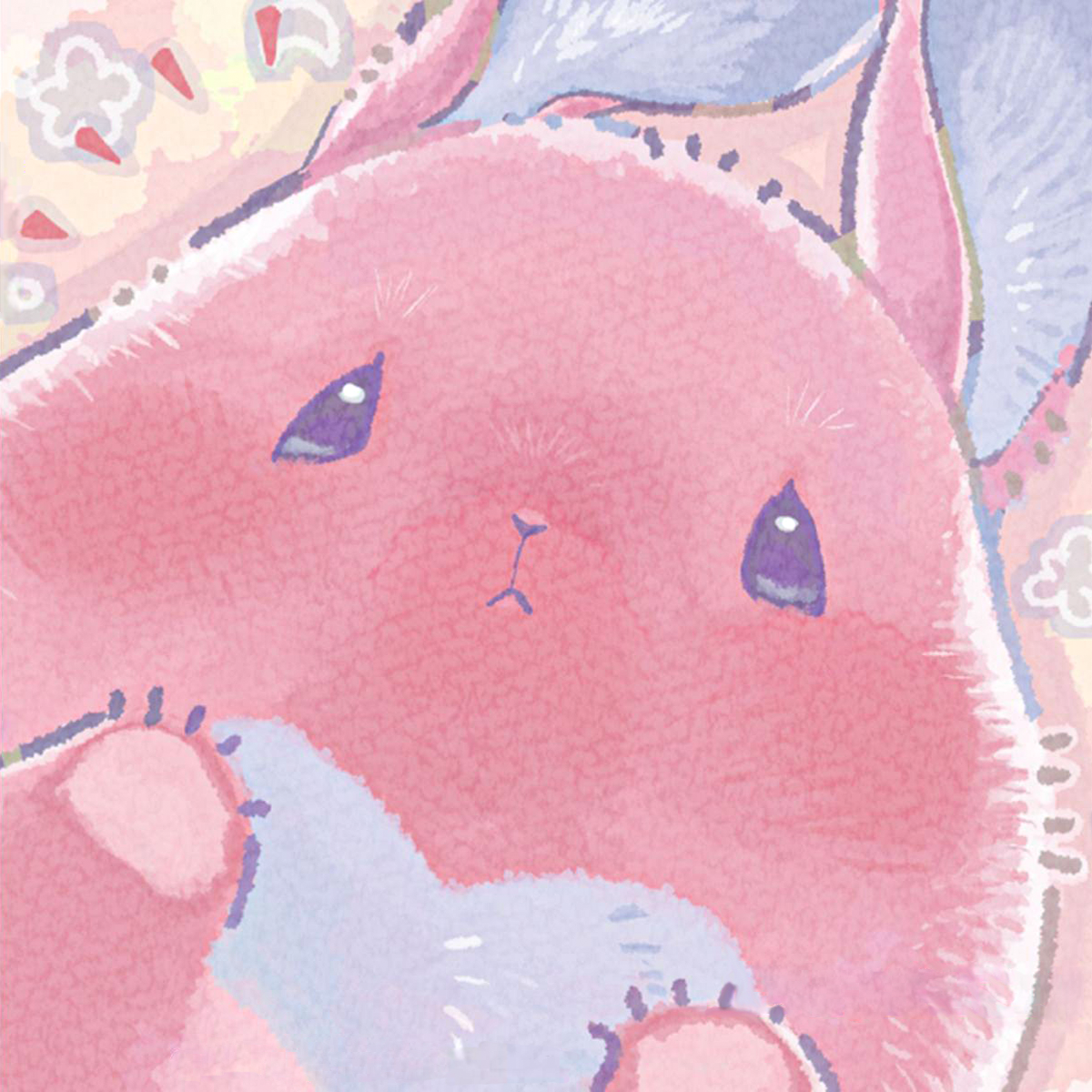The Chinese alligator (Alligator sinensis; simplified Chinese: 鼍; traditional Chinese: 鼉; pinyin: tuó),[5] also known as the Yangtze alligator (simplified Chinese: 扬子鳄; traditional Chinese: 揚子鱷; pinyin: yángzǐ'è), China alligator, or historically the muddy dragon,[6] is a crocodilian endemic to China. It and the American alligator (A. mississippiensis) are the only living species in the genus Alligator of the family Alligatoridae. Dark gray or black in color with a fully armored body, the Chinese alligator grows to 1.5–2.1 metres (5–7 ft) in length and weighs 36–45 kilograms (80–100 lb) as an adult. It brumates in burrows in winter and is nocturnal in summer. Mating occurs in early summer, with females most commonly producing 20–30 eggs, which are smaller than those of any other crocodilian. The species is an opportunistic feeder, primarily eating fish and invertebrates. A vocal species, adults bellow during the mating season and young vocalize to communicate with their parents and other juveniles. Captive specimens have reached age 70, and wild specimens can live past 50.
Living in bodies of fresh water, the Chinese alligator's range is restricted to six regions in the province of Anhui, as well as possibly the provinces of Jiangsu and Zhejiang. Originally living as far away from its current range as Japan, the species previously had a wide range and population, but beginning in 5000 BC,multiple threats, such as habitat destruction, caused the species' population and range to decline. The population in the wild was about 1000 in the 1970s, decreased to below 130 in 2001, and grew after 2003, with its population being about 300 as of 2017. Listed as critically endangered by the International Union for Conservation of Nature, multiple conservation actions have been taking place for this species.
The Chinese alligator has been a part of Chinese literature since the third century. In the late 1200s, Marco Polo became the first person outside of China to write about it. In some writings, the Chinese alligator has been associated with the Chinese dragon. Many pieces of evidence suggest that the Chinese alligator was an inspiration for the Chinese dragon.
History and taxonomy
Chinese alligators were mentioned in Chinese literature very early; for example, in the Classic of Poetry, whose poems were composed between the 11th and 7th centuries BCE. Marco Polo was the first person outside of China to write about the alligator, when he came to China and saw it in the late 1200s. He said that the alligator lived in "caverns" in the day and hunted at night, and that humans targeted its meat and skin, with its gall bladder having multiple medical purposes. He stated that it was found in lakes, rivers, and springs in the province "Karazan". In 1656, Martino Martini, a priest, wrote that the Chinese alligator lived in the river Yangtze and was "much feared by the local residents". Unlike Polo, Martini wrote his description using information from Chinese literature. Chinese alligators were later thought to give Buddhist priests merit if the priests were to buy alligators held in captivity and release them. In 1869, Robert Swinhoe saw a Chinese alligator in an exhibit in Shanghai and wrote the following year:
In February, 1869, some Chinese were exhibiting in the native city of Shanghai what they called a dragon, which they declared had been dug out of a hole in the province of Shense. It was a young crocodile about four feet long, which they kept in tepid water. They made so much money by showing it that they refused to sell it. I can not, of course, guess its species; but I nevertheless think the fact worth recording, as evidence that a species of this group does occur in China.
The Chinese alligator was described by French naturalist Albert-Auguste Fauvel in 1879 as Alligator sinensis; though Fauvel only noticed mentions of them in Chinese literature since about 222–227 CE. The genus Alligator had previously contained only the American alligator since its creation in 1807. Fauvel wrote a detailed description of the species in a book titled Alligators in China: Their History, Description & Identification, including information about its historical account. In 1947, it was suggested to group the Chinese alligator in a separate genus from its American relative, due to the Chinese alligator's bony plate on its upper eyelid. This bony plate is present in caimans, but is rarely present in the American alligator. At the time, the plate was thought to not appear in the American alligator at all. This produced the belief that the Chinese alligator's relationship with other crocodilians was between caimans and American alligators. Paulus Edward Pieris Deraniyagala described the genus Caigator the same year, which only contained the Chinese alligator, making its scientific name Caigator sinensis. However, paleontology has shown that the Chinese alligator has evolved from other now-extinct members of the genus Alligator. This and the fact that the American alligator does infrequently have a bony plate on its eyelid have caused Caigator sinensis to now be classified as a synonym of Alligator sinensis. There is still not a consensus among biologists that the American and Chinese alligators belong to the same genus, despite multiple studies comparing the biochemistry, histology, and various other aspects of the two crocodilians.
The genus, Alligator, is based on the Spanish word el lagarto. The specific name, sinensis, is from the Latin plural possessive sinaensis, meaning "belonging to China".
The oldest definitive record of the Chinese alligator is from the late Pliocene of Japan, around 3 million years old. Pleistocene fossils show that its range was once much more extensive, extending northwards to Shandong and southwards to the Taiwan Strait.
Megathreads and spaces to hang out:
- ❤️ Come listen to music and Watch movies with your fellow Hexbears nerd, in Cy.tube
- 💖 Come talk in the New Monthly queer thread
- 💛 Read about a current topic in the news
- ⭐️ October Movie Nominations ⭐️
reminders:
- 💚 You nerds can join specific comms to see posts about all sorts of topics
- 💙 Hexbear’s algorithm prioritizes struggle sessions over upbears
- 💜 Sorting by new you nerd
- 🌈 If you ever want to make your own megathread, you can go here nerd
- 🐶 Join the unofficial Hexbear-adjacent Mastodon instance toots.matapacos.dog
Links To Resources (Aid and Theory):
Aid:
- 💙Comprehensive list of resources for those in need of an abortion -- reddit link
- 💙Resources for Palestine
Theory:
Why do old people ... Always type like this ... It makes them look very ominous ...
Sometimes they mix it up ... with an exclamation mark ! Or even an emoji ... 😂
My dad will use a series of question marks even when he’s not asking a question. It’s bizarre
Listen JAck,,, my eyes don't work. good no more so i gots to be able to see the little dots??!??? alright
Are you my brother? My father literally does the same thing. On Facebook his friends constantly try to correct him and it's funny as fuck.
The boomer put words in ALL CAPS then use the ellipsis ... to be a bit mysterious then SUDDENLY you get a word in "scare quotes" even if it's not important.
The best is when they use commas instead of periods to denote an ellipsis
Why are you calling me out like this?
Honestly though I think it's a hold over from early sms texts where emojis were used to convey tone bc you only had like 128 characters per text or something and it cost like 10-25 cents every time you sent one.
You were born on the same day the J man was reborn so that makes you pretty op
An Afghan, an Albanian, an Algerian, an American, an Andorran, an Angolan, an Antiguans, an Argentine, an Armenian, an Australian, an Austrian, an Azerbaijani, a Bahamian, a Bahraini, a Bangladeshi, a Barbadian, a Barbudans, a Batswanan, a Belarusian, a Belgian, a Belizean, a Beninese, a Bhutanese, a Bolivian, a Bosnian, a Brazilian, a Brit, a Bruneian, a Bulgarian, a Burkinabe, a Burmese, a Burundian, a Cambodian, a Cameroonian, a Canadian, a Cape Verdean, a Central African, a Chadian, a Chilean, a Chinese, a Colombian, a Comoran, a Congolese, a Costa Rican, a Croatian, a Cuban, a Cypriot, a Czech, a Dane, a Djibouti, a Dominican, a Dutchman, an East Timorese, an Ecuadorean, an Egyptian, an Emirian, an Equatorial Guinean, an Eritrean, an Estonian, an Ethiopian, a Fijian, a Filipino, a Finn, a Frenchman, a Gabonese, a Gambian, a Georgian, a German, a Ghanaian, a Greek, a Grenadian, a Guatemalan, a Guinea-Bissauan, a Guinean, a Guyanese, a Haitian, a Herzegovinian, a Honduran, a Hungarian, an I-Kiribati, an Icelander, an Indian, an Indonesian, an Iranian, an Iraqi, an Irishman, an Israeli, an Italian, an Ivorian, a Jamaican, a Japanese, a Jordanian, a Kazakhstani, a Kenyan, a Kittian and Nevisian, a Kuwaiti, a Kyrgyz, a Laotian, a Latvian, a Lebanese, a Liberian, a Libyan, a Liechtensteiner, a Lithuanian, a Luxembourger, a Macedonian, a Malagasy, a Malawian, a Malaysian, a Maldivan, a Malian, a Maltese, a Marshallese, a Mauritanian, a Mauritian, a Mexican, a Micronesian, a Moldovan, a Monacan, a Mongolian, a Moroccan, a Mosotho, a Motswana, a Mozambican, a Namibian, a Nauruan, a Nepalese, a New Zealander, a Nicaraguan, a Nigerian, a Nigerien, a North Korean, a Northern Irishman, a Norwegian, an Omani, a Pakistani, a Palauan, a Palestinian, a Panamanian, a Papua New Guinean, a Paraguayan, a Peruvian, a Pole, a Portuguese, a Qatari, a Romanian, a Russian, a Rwandan, a Saint Lucian, a Salvadoran, a Samoan, a San Marinese, a Sao Tomean, a Saudi, a Scottish, a Senegalese, a Serbian, a Seychellois, a Sierra Leonean, a Singaporean, a Slovakian, a Slovenian, a Solomon Islander, a Somali, a South African, a South Korean, a Spaniard, a Sri Lankan, a Sudanese, a Surinamer, a Swazi, a Swede, a Swiss, a Syrian, a Tajik, a Tanzanian, a Togolese, a Tongan, a Trinidadian or Tobagonian, a Tunisian, a Turk, a Tuvaluan, a Ugandan, a Ukrainian, a Uruguayan, a Uzbekistani, a Venezuelan, a Vietnamese, a Welshman, a Yemenite, a Zambian and a Zimbabwean
all go to a bar..
spoiler
The doorman stops them and says "Sorry, I can’t let you in without a Thai.
:angery: funny that's happened to me a bunch too. Must be a problem with the game
Easters not really a major holiday unless you're mega Catholic imo
Death to America
Marco Polo when he sees a Chinese gator: :soypoint-1: :croc-pog: :soypoint-2:
New Megathread Nerds!!! :posting: :gator-bi: :some-controversy:
-
🐶 Join the unofficial Hexbear-adjacent Mastodon instance toots.matapacos.dog
-
🌈 If you ever want to make your own megathread, you can go here nerd
@aaaaaaadjsf @Abraxiel @Abstraction @Acute_Engles @American_Communist22 @AnarchaPrincess @Antilope @Alaskaball @Aliveelectricwire @artificialset @bbnh69420 @BigLadKarlLiebknecht @buh @CatEars420 @cawsby @CDommunist @Cheesewizzard @Cherufe @ClimateChangeAnxiety @clover @comi @Commander_Data @ComradeCmdrPiggy @ComradeEchidna @context @congressbaseballfan @corgiwithalaptop @crime @Cromalin @CyborgMarx @Dawn_Beveridge @Dirt_Owl @Dolores @Donut @drinkinglakewater @Dryad @ElChapoDeChapo @ElGosso @el_principito @EmmaGoldman @FidelCashflow @Flinch @flowernet @forcequit @Frogmanfromlake @Gabbo @GalaxyBrain @ghosts @Goadstool @GomerPyle @GorbinOutOverHere @GoroAkechi @Grownbravy @GVAGUY3 @HarryLime @hexaflexagonbear @HoChiMaxh @Hohsia @Ho_Chi_Chungus @Ideology @InevitableSwing @iwillavengeyoufather @I_HATE_JOHN_CALVIN @jabrd @JamesConeZone @Kanna @Kaputnik @Koa_lala @kristina @LesbianLiberty @marxisthayaca
@MaxOS @MelaniaTrump @Mindfury @mkultrawide @Nakoichi @PaulSmackage @plinky @PM_ME_YOUR_FOUCAULTS @PorkrollPosadist @President_Obama @PurrLure @Ram_The_Manparts @Redcuban1959 @RNAi
@Rojo27 @RoseColoredVoid @solaranus @SorosFootSoldier @Sickos @silent_water @Sphere @Spike @spring_rabbit @ssjmarx @take_five_seconds @TankieTanuki @Teekeeus @Tervell
@TheSpectreOfGay @ThisMachinePostsHog @ultraviolet @UlyssesT @Venustum @viva_la_juche @WhatDoYouMeanPodcast @Wheaties @WhyEssEff @WIIHAPPYFEW @wtypstanaccount04 @wombat @Yanqui_UXO @Zoift @Zuzak@thelastaxolotl @WhoaSlowDownMaurice @Quimby @Lydia
@CARCOSA @liberal @ella @all_that_is_solid @KenBonesWildRide @KiraNerys @TomboyShulk @DuckNuckem @SapGreen @Zangief @scumlord @COMMENT @Antisocial_Socialist @DOPESMOKERDENG
Remember nerds, no current struggle session discussion here on the general megathread, i will ban you from the comm and remove your comment, have a good day/night :meow-coffee:
-
I've got some really good stuff going on in my life currently and that's a nice feeling
Interrupted my family today during easter dinner grace to tell everyone how CHINA is using penis milking machines on dead bodies to pump out super soldier spunk. My relatives are all heartbroken because of this news.
my grandpa is kept in a chinese medical facility at 105 years old, clinging to life because of regular adrenachrome injections and penis milkings. i tried to tell him he was anti-american for getting his shit sucked by a vacuum but he called me a reverse tankie and told me to fuck off. this is the future the liberals and my grandfather want.
Supervisor made an “I identify as an attack helicopter joke”
Why do these dumbfucks get paid more than me
AAaaaaaaah my dad is talking to me about Hebrew numerology “monster cans are 666” shit lol
Edit: he said translation apps are Artificial intelligence and they’re reuniting the languages under one as prophesized from the tower babble shit lmao. Sign of the end times
is he reading weird blogs or is this what they're talking about on cable news now
Idk, He fell into the Illuminati, weird, templeOS-level brainworm space back in like 2005 and he’s been there ever since
Watched beef and thinking about the classic trope of "I thought I'd feel better when I became rich but nothing changed" and how it is such a disgusting and sneaky form of capitalist realism. What the trope should really say is "your dreams and aspirations and hope for happiness and life don't matter if you're a prole in the way that cattle and pigs dreams don't before theyre slaughtered" but instead it just says "actually the rich have the same problems as u buddy".
Personally I like to call these kinds of messages a sort of "capitalist confessional", where capitalism(abstractly represented) confesses a fundamental flaw or injustice inherent to the structure of capitalism, but in such a way as to make the viewer feel some kind of enlightened understanding, while simultaneously reinforcing capitalism as the natural state of the world.
Theres endless forms of it, from films and other bits of media to just spoken mantras, like that Churchill "Capitalism/Democracy is the worst system we have ever come up with, except for all the rest"(Paraphrased, I dont wanna look up such a dumb quote.) Its part of the whole non-ideology idea that is ascribed to Capitalism and all the factions within, wether it be Liberals or Conservatives.
The Joyce quote from Disco Elysium really applies to this also(A quote I am willing to look up.)
Capital has the ability to subsume all critiques into itself. Even those who would *critique* capital end up *reinforcing* it instead...
Libs fucking love Parasite, for example, because they can interpret it as one of these confessionals, it is simply a sobering and realistic portrayal of the inherent struggles of our nature, and nothing more. Though I dont think this is necessarily a universal truth that nothing can critique capitalism, I think its moreso that you cant critique capitalism from within without falling prey to this kind of ideological interpretation.
Terrorizing the neighborhood by going around telling old people what a femboy is
Going to be honest with you, I was totally on board with the proletariat revolution but then I saw a commercial for M&Ms that made a man look weak and now I'm a neo-nazi.
Gothic, Gothic II and Risen. Super atmospheric and cozy. In some ways they are even better than Bethesda RPGs. Risen is the most user-friendly and approachable for newcomers to this series. I played it recently and it still holds up extremely well.
Neverwinter Nights got you explorin' fightin' role play'n and talkin' to npcs and collectin' loot






















